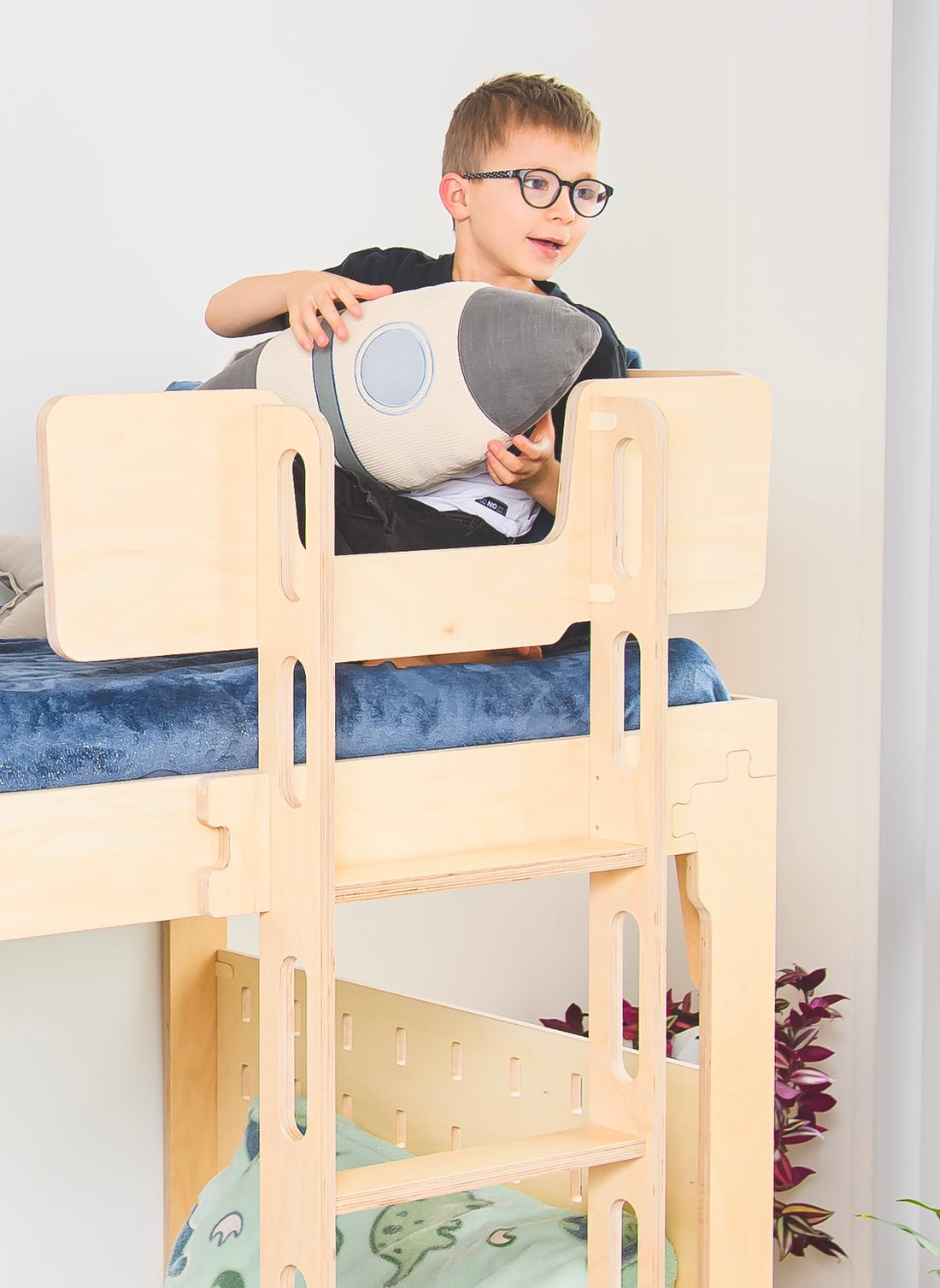
What Size Bed Frame Should I Get for My Child?
Choosing the right bed frame for your child is an important decision. It not only affects their comfort but also plays a crucial role in their safety and overall well-being. One of the first questions that come to mind when shopping for a kids' bed frame is, "What size should I get?" In this comprehensive guide, we'll help you navigate through the factors to consider when determining the ideal size for your child's bed frame.
1. Age and Size of Your Child:
The size of the bed frame you choose should align with your child's age and physical development. Here are some general guidelines using New Zealand's standard bed sizes:
- Cot Size: Cot-sized bed frames are smaller and typically used for toddlers transitioning from cribs. They measure about 69 cm by 130 cm, providing a snug sleeping space for little ones.
- Single Size: Single-sized bed frames are designed for young children and measure approximately 92 cm by 188 cm, making them a suitable choice for kids.
- King Single: King Single-sized bed frames are larger than single beds and measure about 107 cm by 203 cm, providing a comfortable option for growing children.
- Double Size: Double-sized bed frames, measuring about 138 cm by 188 cm, offer ample room for growing teenagers and can accommodate taller kids.
- Queen Size: Queen-sized bed frames, approximately 153 cm by 203 cm, are ideal for older teenagers and provide extra space for comfort.
2. Room Size:
Consider the dimensions of your child's bedroom when selecting a bed frame size. Ensure there is enough space for the bed and other essential furniture while allowing for comfortable movement. A room with limited space might benefit from a single or double-sized bed to maximise floor space.
3. Future Growth:
If you want a bed frame that will last through your child's growth spurts, it's wise to think ahead. Double, queen, or king-sized beds provide more room for growth, but single-sized beds are often sufficient for many children until they reach their teenage years.
4. Siblings or Sleepovers:
If your child shares a room with a sibling or frequently has sleepovers, you may want to consider bunk beds or trundle beds to save space and accommodate multiple sleepers.
5. Safety Considerations:
Ensure that the chosen bed frame size is safe for your child. Guardrails and secure construction are essential to prevent accidents, especially for younger children.
Conclusion:
Selecting the right size bed frame for your child involves considering their age, room size, future growth, and safety. Keep in mind that each child is unique, so choose a size that best suits their individual needs. By following these guidelines, you can make an informed decision that ensures your child's comfort and safety as they rest and grow.
For more expert advice on kids' furniture and bedroom solutions, explore our wide range of kid-friendly bed frames and accessories.
